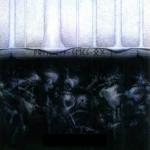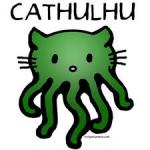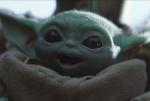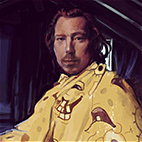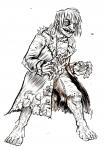I liked the book immensely. Lament and Deadhouse Landing have rekindled my love for the Malazan universe. Once again I feel that thrill when meeting old and new characters, when I recognize names and hints, when I begin speculating on what cryptic side comments mean, etc. Esslemont is handling the background material for the old books superbly. He's revealing information we've only had hints of for over a decade and yet, somehow he manages to still keep the characters and the lore mysterious and fascinating.
I feel like Deadhouse Landing ramps up the series from the easy introductions of Dancer's Lament. We have many more characters and POV's, we are seeing more plot strands and with Deadhouse Landing, a threat is revealed in the background. This made for a much more interesting and ambitious story but also reveals some weaknesses in this new series format. I found myself frustrated with how quickly the book moved. It made it a thrilling read with pretty much no boring chapters but also means there was no room for the story to breath. There was no time to delve into the politics and motivations that had more space in the original book series. I found myself wanting to know more about Malaz Island... is there nothing more to this place than the City? And what about the cities actual leadership beyond Nok's admiral rule? What about the mages? Not to speak about wanting to know more about the politics and power angles between the small nations of the region.
And what about Kelanved and Dancer? If Dancer's Lament was Dorin/Dancer's book then this was definitely Kelanved's. And I enjoyed that but it felt like Dancer did nothing but trail behind Kelanved in this book, to the point we barely got to see him in action beyond the fight with Cowl. And the accelerated speed of the storytelling, most likely caused by the page count, meant that the changes to the two men felt rushed. They go Shadow Exploring in the middle of a guerilla underworld takeover, Kelanved breaks open Shadow, gets Ottataral Warren Fucked, survives a month in a quarry, reassembles, then immediately goes back to trekking around Shadow, comes to Malaz city, tames the hounds, invades the Deadhouse and just resumes their takeover of Malaz. It felt like the crazy shit Dancer and Kelanved were notorious for doing but not on this timescale. It felt like the book could easily had stretched over another couple hundred pages.
Still, I think what Esslemont is building here is clever. This is a new, simpler, leaner, easier introduction for people who can't get into the first books of the Main series run. Deadhouse Landing moves fast and it's fun. It has those badass scenes that I love and the character's have that larger than life quality that I appreciate.
I'll say one thing about Esslemont's handling of the Old Guard, he's completely changing a lot of my assumptions about the old days. Some misunderstandings/changes I wasn't aware of:
I never connected Surly/Surresh/Laseen with royalty. In retrospect, it makes sense politically, why else would Laseen had been able to take power and get support from the nobility? Hard to believe they'd follow a former bar maid... but I seriously thought that was her origin. I had an idea in my mind of the Old Family just being random mercenaries, soldiers and pirates who allied themselves with Kelanved and Dancer.
I'm also surprised by the roles of Dujek and "Jack". They emerge as formidable character but not the character's I expected from the stories told in the first books. Dujek was I believe referred to as "A kid" by the older members of the Old Guard. And Whiskey Jack I wouldn't expect to show up for another human generation or two. Which leads me to wonder what Esslemont is doing to the timeline. As far as I recall, at the time of Gardens of the Moon, The Malazan Empire is a hundred years old or more. And Dujek is around 70'ish years old. Which fitted with his status as a young kid who hung around the Old Family and worked his way up to High Fist.
Now with Deadhouse Landing, what the hell is happening to our timeline? We can hand-wave it all by saying that Dujek, Whiskeyjack, etc. just told stories to fit in with legends and political expediencies, but something is really off there. I mean, if Dujek and Whiskeyjack is there at the beginning... what the fuck is going on with the relationship to Laseen and Tayschren's callousness and detachment? Of course we can argue we're just navigating GOTM'isms but this is ugly.
And yet, I also like it. We had a picture of what the past was like and Deadhouse Landing is shaking things up.
Now can somebody explain to me who the hell Nara, the woman Dassem saves/bargains for is? I think I remember her in Dancer's Lament but who is she? In the original series, Fiddler and co. (I think?) come by a woman left in the deadhouse we learned was connected to Dassem. Maybe be learn that in Bonehunters? Now, I was of the impression that this woman was actually Dassem's daughter who was sacrificed/hurt/killed in the last Chaining of the Crippled God. But that's clearly not it. So who is she? The Dramatis Personae just calls her a follower. Is she a sister of Dassem? Given his origin story that sounds unlikely. A lover? Just a colleague? I am so confused by this.
This post has been edited by Alternative Goose: 01 January 2018 - 02:21 PM

 Help
Help




